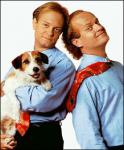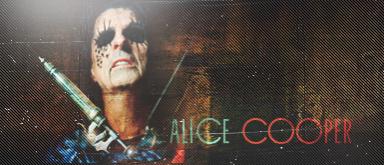
|
|
|
|
|
|
Tossed Salad & Scrambled Eggs
Join Date: Jan 2009
Location: ATX & OPKS
Casino cash: $-38004
|
*****The Patrick Mahomes Thread*****
IT ****ING HAPPENED
OP UPDATE: Because of all the interest in this thread, I've place all of the video content of Patrick Mahomes II's college career, and draft day goodness into a single post that can be found here. Enjoy! Last edited by Dante84; 05-17-2017 at 09:40 AM.. |
|
Posts: 20,076
           |

|
|
|
#30466 |
|
Resident Glue Sniffer
Join Date: Nov 2003
Casino cash: $3579358
|
I was floored when it happened. I thought I'd NEVER see the Chiefs even attempt to take a QB in the first.
__________________
Life is 99% inspiration, 1% Perspiration, and 1% Attention to Detial. RIP & Godspeed: Saccoppo Lonewolf Ed Fire Me Boy |
|
Posts: 37,401
           |

|
|
|
#30467 |
|
I'll be back.
Join Date: Nov 2002
Casino cash: $2840478
|
I'm feeling the Mahomes love even more today.
In my Madden franchise his replacement white boy noodle arm tried a cross-body Mahomes throw 50 yards downfield and it got picked. It would have been 6 if Mahomes had been throwing it. 
__________________
Chiefs game films |
|
Posts: 288,100
           |

|
|
|
#30468 |
|
Tossed Salad & Scrambled Eggs
Join Date: Jan 2009
Location: ATX & OPKS
Casino cash: $-38004
|
04-27-2017, 08:19 PM
The moment that changed everything.
__________________
.  . .
|
|
Posts: 20,076
           |

|
|
|
#30469 |
|
Andy Reid Supporter
Join Date: Apr 2012
Casino cash: $399611
|
4 years ago in a bar in NYC with Giants/Jets fans looking at me celebrating like I was a ****ing moron bc we drafted a “project” QB from Texas Tech.
Who’s laughing now mother****ers?
__________________
Mike Greenberg@Espngreeny I can’t fathom what it must be like to be a fan of the #Chiefs. Adopt a Chief: Jared Wiley |
|
Posts: 48,313
           |

|
|
|
#30470 |
|
**** you, you cretin.
Join Date: Jan 2012
Casino cash: $428026
|
Might be my next tattoo
__________________
Attendance Chief record 11-9 |
|
Posts: 30,135
           |

|
|
|
#30471 |
|
Keep Camp Home!
Join Date: Sep 2003
Location: St Joe MO
Casino cash: $836277
|
nearing 4M views of this thread...
__________________
 from September to February! from September to February!  from November to April! from November to April!  from April to October! from April to October! 2024 Adopt-a-Chief: Xavier Worthy |
|
Posts: 10,496
           |

|
|
|
#30472 |
|
Special Teams ACE!!!
Join Date: Apr 2002
Location: Where the hell is SNR
Casino cash: $505208
|
 |
|
Posts: 92,050
           |

|
|
|
#30473 |
|
Three-Pat
Join Date: May 2011
Location: Colorado Springs
Casino cash: $5053
|
|
|
Posts: 18,248
 |

|
|
|
#30474 |
|
Has a particular set of skills
Join Date: Dec 2003
Location: On the water
Casino cash: $1218962
|
April 27th is to be forever and every year be declared Patrick Mahomes day.
__________________
Mind you own damn business |
|
Posts: 80,122
           |

|
|
|
#30475 |
|
Man of Culture
Join Date: Aug 2000
Location: Far Beyond Comprehension
Casino cash: $-957187
|
__________________

|
|
Posts: 42,676
           |

|
|
|
#30476 |
|
Banned
Join Date: Apr 2019
Casino cash: $5920400
|
|
|
Posts: 1
           |

|
|
|
#30477 |
|
Banned
Join Date: Mar 2016
Location: Houston, Tx
Casino cash: $3290400
|
 |
|
Posts: 28,395
           |

|
|
|
#30478 | |
|
I’m a Mahomo!
Join Date: Aug 2004
Location: Mid-Missouri
Casino cash: $6771021
|
https://theathletic.com/2537783/2021...d-five-whiffs/
Chiefs’ gambles in 2017 draft resulted in one grand slam (Patrick Mahomes) and five whiffs by Nate Taylor Quote:
__________________
 |
|
|
Posts: 54,038
           |

|
|
|
#30479 | |
|
Banned
Join Date: Apr 2019
Casino cash: $5920400
|
Quote:
|
|
|
Posts: 1
           |

|
|
|
#30480 |
|
Rockin' yer FACE OFF!
Join Date: Feb 2003
Location: Omaha, Nebraska
Casino cash: $2255437
|
Forgot about Jehu Chesson...and apparently so has the rest of the league. He's a free agent right now, and he's never really played at all. Hope he saved the few dollars he earned.
__________________
 We have a million reasons for failure, but not one excuse...    Die Donks, DIE!! Die Donks, DIE!!  Holy Crap fellas!!! We did it!!! THREE TIMES!!! 
|
|
Posts: 26,448
           |

|


|
|
|